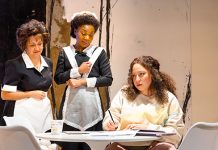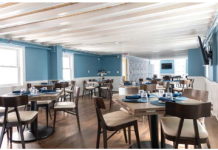By Linda McK.Stewart
Welcome to the Gamble House
All was in readiness. The sales contract for the Gamble House at 4 Westmoreland Place, Pasadena, Calif. was ready for signing.
The seller was Cecil Gamble whose parents, David and Mary Gamble from Cincinnati, had commissioned the house in 1908 as a winter vacation retreat. Now 58 years later Cecil and his wife, Louise, had decided to sell the family homestead – but not without reluctance. The 8,100-square foot house was a masterpiece of design and construction by Greene and Greene, two brothers, MIT-educated architects leaders in the American Arts and Crafts movement that took hold here in the U.S. several decades after its origin in England.

Everything about the Gamble House affirms its prominence in the annals of American architecture. Its construction is a joyous celebration of the integrity, versatility and beauty of wood. Not just such exotics as teak, mahogany and ebony but also such vernaculars as cedar, bird’s-eye maple, redwood, oak and pine. Ten master carpenters working with some 17 different species of wood completed construction in 10 months, one month short of the promised date. The cost, astronomical at the time, was $50,000. Another $10,000 covered the cost of the custom-designed interior. Every piece of wood that went into the house… stairs, balustrades, cornices, switch plates, chair rails, moldings and doors…all was hand-buffed to a satiny finish. Every nail and screwhead was covered by buttons of mahogany. Inlays of silver, abalone shell, semiprecious stone chips served as transitions between surfaces. The interior was shaded from the California sun by broad overhangs. Bedrooms opened onto a screened sleeping porch. Light poured into the center hall through panes of colored Tiffany glass, which was used repeatedly in many of the windows. Many features of the house borrowed freely from both Japanese and Swiss design. It was, in short, a work of art that bespoke grace, simplicity and comfort.
Cecil Gamble took pen in hand. The would-be buyer hovered, impatient to add his John Hancock to the sales contract. But just as Gamble lowered the pen, the buyer casually remarked to his lawyer that as soon as the house was legally his, he would paint all of the interiors “a nice shade of white.”
It was a near thing. But a miss was indeed as good as a mile. Horrified to hear of the impending desecration to what he rightly viewed as an architectural gem, Cecil Gamble dropped the pen and rose to his feet. “This house will not be sold,” he declared, a sentiment stoutly echoed by Louise, his wife. The year was 1966. In place of the aborted sale Cecil and Louise Gamble deeded the house to the City of Pasadena in a joint agreement with the University of Southern California’s School of Architecture. Today the Gamble House is registered as a National Historic Landmark, its future – we hope – thereby assured in perpetuity.
The circumstances that attended the Gamble House were from the onset, unique: the Gamble family was extremely wealthy, second-generation heirs to Proctor and Gamble, the multinational manufacturer of household products that originated in 1837. Residents of Cincinnati, the family – despite their wealth – embraced modesty as a way of life. Nondrinkers and nonsmokers, they held a lifetime aversion to ostentation. Conservatives? Absolutely. But progressive conservatives who were avid supporters of national parks, women’s suffrage and civil rights. Their meeting with Charles and Henry Greene was, from the outset mutually providential. Not only did the Gambles and the Greenes share a mutual enthusiasm for American craftsmanship, but they shared as well distaste for the Eurocentric tastes so revered in the eastern U.S. The freedom that David and Mary Gamble granted the Greenes was total. They were entrusted not only with the construction of the house but with every detail of décor, furniture and lighting, not excluding the layout and planting of the surrounding gardens. The indoor-outdoor living typical of southern California exactly suited the Greene brothers who, to put it in their own words, sought “to brand southern California as a civilized Arcadia.” Like David and Mary Gamble, the Greenes valued what David Gamble called “the simple life and democratic values.”
In a quiet sector of Pasadena the Gamble house sits among other houses designed by Green and Greene. Situated on a 1-acre lot, the house presents a pleasingly low profile, agreeably complemented by a scattering of southern California trees…. pines, oaks and eucalyptus. The house is open to the public for one-hour guided tours and for longer three-hour group tours. The house provides a valuable teaching tool to the students of USC School of Architecture. Every year two fortunate students are awarded the privilege of residing in the house for their final semester. It’s a highly coveted privilege.
The Gamble House Bookstore, located in the original garage, is a treasure trove of art and architecture books and carries as well a fine selection of early 1900 memorabilia. Tour guides, all volunteers, are Greene and Greene enthusiasts. A one-hour tour of the Gamble House is a near equivalent to an intro course in 20th century American architecture. Well worth noting: an innovative Junior Docent program addressed to 7th and 8th graders, designed to foster youthful appreciation of art, architecture and conservation.
IF YOU GO: For detailed information about the Gamble House, call 626-793-3334.














